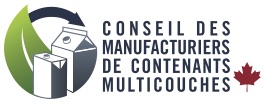How are cartons collected for recycling?
Cartons are recovered under different systems across the country, including via residential collection programs – some of which are entirely or partially funded through stewardship fees, others funded entirely via the municipal tax base – and through beverage container deposit systems. In some provinces, both types of systems co-exist. The content of the carton (juice, milk, or non-beverage) sometimes determines the system by which they are collected. Refer to the Get Involved Section for information on how cartons are collected where you live.
How are we doing?
As of January 2024, the national blended carton recycling-collection rate was 60%*. This is up from 26% in 2008.
Access to carton recycling (the percentage of the Canadian population who can recycle cartons in their community) for beverage cartons (juice & milk cartons) is 97% while access to non-beverage recycling (soup & broth cartons) is 90%.
Carton recycling access and carton recycling rates vary across the country.
Click on a particular province or territory on the map to learn more.
*Some jurisdictions report a recycling (recovery) rate while others report a collection rate. For this reason, we cannot report a uniform national recycling or collection rate.
Why recycle?
Recycling a product or packaging at the end of its useful life also reduces the emission of greenhouse gases (GHG) compared to landfilling. For example, the 10,730 tonnes of cartons that were recycled in Ontario in 2017 resulted in about 43,000 tonnes of C02e avoided, compared to the disposal scenario[1]. This is equivalent to removing 9,500 passenger cars from the roadway each year.
Recycling means reducing waste – breaking down an old product and using it for something new. By recycling, you are conserving energy and natural resources as well as protecting the environment. The demand for recycled paper from cartons decreases the strain on natural resources and provides a market for recycled goods.
Get involved!
Carton Council of Canada is committed to increasing carton recycling, but we can’t do it alone. We need the collaboration and support of all stakeholders in the carton recycling value chain – sorters, municipalities, government agencies and consumers – to avoid that cartons end up in disposal sites. The good news is that there is something in it for everyone when it comes to carton recycling. As a consumer, you can help keep cartons out of disposal sites by participating in the recycling program available to you. If you live in a community where cartons are collected along with other recyclables as part of residential recycling program, make sure to follow the sorting and set-out instructions provided your municipality. If you live in a province or territory where cartons are collected through a deposit return system, make sure to bring back your cartons to the depot located closest to you. Click on the map above to learn more.
Notes
[1] References: tonnes of cartons recycled obtained from Stewardship Ontario’s 2019 Blue Box Fee Calculation model (based on 2017 data), available at https://stewardshipontario.ca/wp-content/uploads/2018/11/2019_PIM.xls. The tonnes of C02e avoided were calculated based on Environment Canada’s Waste GHG Calculator. The “other paper” category was used as a substitute for cartons.

